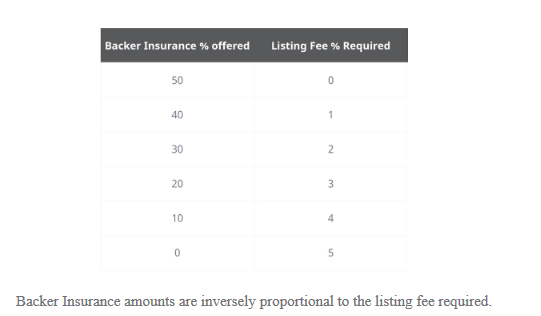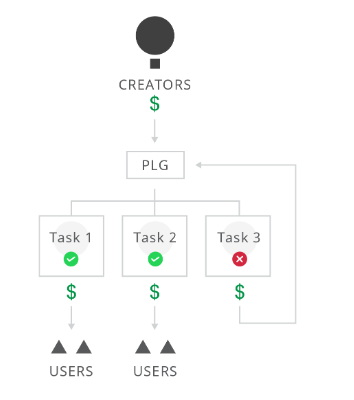Pledgecamp: Crowdfunding 2.0
PLEDGECAMP
Crowdfunding, according to merriam-webster, is the practice of obtaining needed funding as for a new business by soliciting contributions from a large number of people especially from the online community.) Simply like its name suggests, crowdfunding is the gathering of funds meant to help the process of creating or establishing something. According to that description, crowdfunding can be fund collecting for a brand new video game, the creation of an educational short films, the release of a musical album, and so on.
Crowdfunding, in essence, brings benefit to all parties involved. Let’s say there’s a creator – a musician looking for funds to release a new, highly anticipated album. Crowdfunding can help said musician to release said album, while the musician’s donators can also receive a reward from their benevolence, even when it’s just limited to the feeling of happiness for being able to help the favorite musician. Often times, due to lack of funding, our favorite platform of entertainment can be stagnant, stopped, or abandoned.
The business model of the crowdfunding platform is by acquiring the fee from the total fund generated by the creator. What do we need to know is the crowdfunding platform charges a middleman fee ranging from 7-15% from the said total fund , and it includes platform fee cost and 3rd party processor cost for financial processes.
Here’s an example following the previous one above: The musician, who aims to release a brand new album, needed US$10.000. Long story short, the fund collection reached said number! However, said musician was charged by platform fees, at around 7%. So in the end he or she only received US$9.300. Are there any system that operate better with lower fee charges?
Another problem we face is how can the donators can be rest assured that their money, the ones that’ll be given away, will be used for the right purposes? As donator, no matter how benevolent we can be – none of us want our money to be abused. There are cases of this – such as someone who ends up using a crowdfunding funds for personal needs and not for achieving the original goals whatsoever. How do we know that the people and/or creators we support will be using our money towards their goals? Is there a system that can prevent funds abuse?
From the veteran of crowdfunding world, Jae Choi – the CEO of Pledgecamp – and one of the advisors Randi Zuckerberg of Zuckerberg Media, came forth Pledgecamp that aims to finish crowdfunding problems.
Simply put, Pledgecamp is a crowdfunding platform that uses blockchain technology. Pledgecamp believes that the crowdfunding problems mentioned above can be solved by blockchain technology, especially the problem with trust – where Pledgecamp aims to troubleshoot it with its signature smart contract.
Here in Pledgecamp, the donators – hereforth referred as backers – can acquire Backer Insurance. The Backer Insurance covers the backers should something undesirable things happened in the process of crowdfunding. For example, when there was no progress at all from a certain project, the donators can gain back a sum of their money.
The users in the ecosystem of Pledgecamp can also receive reward based upon the level of their participation towards a project. Let’s take “A Project” into an example – say it’s a project that aims to launch a new brand of snack. The creators of that project thus needed a food-related survey in order to improve the final result of their product. The creators can then offer Pledge Coin or PLG from their budget for the people willing to take the survey. Long story short, the people or users taking the survey is rewarded with PLG.
The users of Pledgecamp stake the PLG they have, which is called Camp Shares by Pledgecamp. The users possessing camp shares can gain benefit from the platform, like getting fee listing from a campaign. However, in order to keep on getting rewards, the camp share owners must be obliged to give positive contributions towards the platform, such as by moderating existing campaigns.
What follows is how the system works in Pledgecamp:
An artist is creating a video clip of his album and it requires a rather large funding. This artist then creates a campaign in Pledgecamp for his needs. And so, the steps that he’s going to do are:
Storing deposit in the form of PLG in a certain amount that acts as a collateral. This deposit will be returned to the artist once he’s done with the KYC process and giving other needed detail to the platform. This is done in order to minimze fraudulent actions.
The artist or creator decides, in percent, the amount of fund allocated to Backer Insurance. The larger sum given to Backer Insurance the smaller fee listing that will be charged towards Backer. At certain timeframes, the artist will be given chances to explain the progress of his projects so far.
Funding for the creators is released to the public at certain times and It will be decided whether they still got the backers to support their campaigns or not through voting. Suppose the creator gave 50% of total funding as insurance – when the project stopped and the expected results aren’t met the backers will receive 50% of total funding back, as promised in the beginning.
Here read the detail in the whitepaper
Main point
The issues of trust mentioned beforehand is no doubt an obstacle in the world of crowdfunding. This issues, as Pledgecamp aims to do so, can be solved by blockchain.
Without the interference of others, the blockchain system can automatically give protection, especially towards backers when the creator they support is unable to meet the target set in the first place, or worse, doing fraudulent acts.
In this case, the backer insurance acts and lives up to its name – insurance. Although the PLG given by backers will not be returned 100% on such cases, this feature can help maintain trust that the creators will have significantly less chance to commit fraudulent actions.
This backer insurance can drive creators to work the best towards their respective projects. Normally, creators don’t want the funding for their project to be stopped halfway just because the backers aren’t satisfied with the progress.
Aside from that, the ecosystem created within Pledgecamp platform has all the participants contributing and getting rewards. This will make them more engaged in activities within it. Those who possess camp share will ensure the platform is free from people who have destructive campaigns by reporting it. The better an existing listing is the higher chance for users to gain rewards. After all, a good platform is expected to bring even more donators. Backers gain profit from the backer insurance and they can also participate in upgrading the quality of creator’s campaigns, such as by filling questionnaires and helping with promotions on social media, and so on. This act is supported by the incentives given by the creators in the shape of PLG.
CONCLUSION
Pledgecamp was born upon the classic sets of problem associated with crowdfunding, such as trust issues, cost issues, and lack of insurance for the donators or backers should a creator being fraudulent or just plain lazy. Pledgecamp offers an alternative which is a form of insurance that benefits the backers and the creators as well due to lower fees – although the returned fund isn’t exactly 100%, but sometimes a sense of security is simply beyond money.
In terms of its ecosystem, Pledgecamp also tries to become self-sufficient. In the absence of an authoritative figure due to the spirit of decentralization emerges the power of Pledgecamp community that runs the platform. Thus an idea of camp share was born, where users can be rewarded when they contribute positive things towards the ecosystem. The camp share incentive and backer insurance in the end can drive creators to work the best they can do.
It is not exactly smooth sailing for Pledgecamp – after all, the platform is up against the “glory and power” of traditional crowdfunding platforms that has existed for many, many years. Also, there’s a good chance that people prefer the traditional crowdfunding methods due to the fact that Pledgecamp is cryptocurrency based – not everyone has an in-depth knowledge of cryptocurrency and thus they’ll prefer the old methods. The challenge for the platform will be how to make people believe that this new platform can do not just well but great, and how exactly Pledgecamp can live up to its name.
Still, the people that comprised the team of Pledgecamp are the ones that are experts in the world of crowdfunding. With the presence of Randi Zuckerberg on the top deck of Pledgecamp, whatever the platform is preparing to face the crowdfunding problems of tomorrow will be an interesting sight to watch.
Pledgecamp Team.
Further readings.
Website https://pledgecamp.com
F.A.Q https://medium.com/pledgecamp/pledgecamp-faq-a57fa648ed83
Whitepaper https://pledgecamp.com/__pdf/whitepaper-pledgecamp-9-23.pdf
Social Media
Twitter https://twitter.com/pledgecamp
Telegram https://t.me/pledgecamp
bounty0x username: mamacita
Disclaimer: This article is published on the intention of participating and acquiring rewards in the Pledgecamp bounty campaign. It is purely based on the writer’s personal and subjective thoughts. This article is not, in any way, persuade or prevent any attempt of financial activities (or any other activities for that matter) such as investments towards any aforementioned companies/bodies of businesses. Please conduct further and thorough research before attempting any financial or monetary actions related to this article.





Congratulations! This post has been upvoted from the communal account, @minnowsupport, by panjay from the Minnow Support Project. It's a witness project run by aggroed, ausbitbank, teamsteem, someguy123, neoxian, followbtcnews, and netuoso. The goal is to help Steemit grow by supporting Minnows. Please find us at the Peace, Abundance, and Liberty Network (PALnet) Discord Channel. It's a completely public and open space to all members of the Steemit community who voluntarily choose to be there.
If you would like to delegate to the Minnow Support Project you can do so by clicking on the following links: 50SP, 100SP, 250SP, 500SP, 1000SP, 5000SP.
Be sure to leave at least 50SP undelegated on your account.
Congratulations @panjay! You received a personal award!
You can view your badges on your Steem Board and compare to others on the Steem Ranking
Vote for @Steemitboard as a witness to get one more award and increased upvotes!